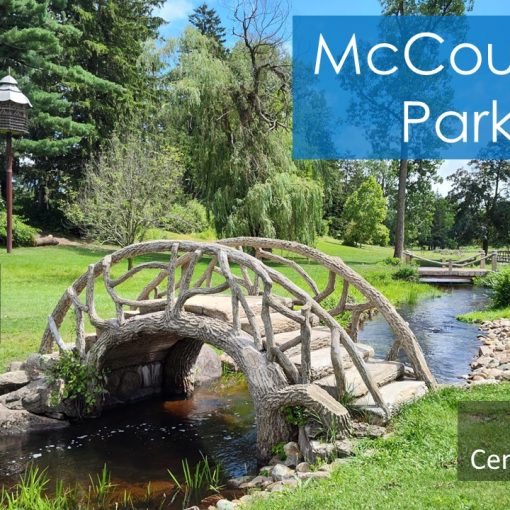The Arcadia Marsh Nature Preserve, a Michigan treasure, is nestled along M-22, thirty miles north of Manistee. It is one of sixteen Lake Michigan coastal marshes. This wetland habitat is home to thirty-eight endangered and threatened species of birds, plants and fish. The Arcadia Marsh is recognized as one of the top ten bird watching sites, featuring over 250 bird species. Come along with us as we visit this incredible habitat and learn about the heroes who saved the area!
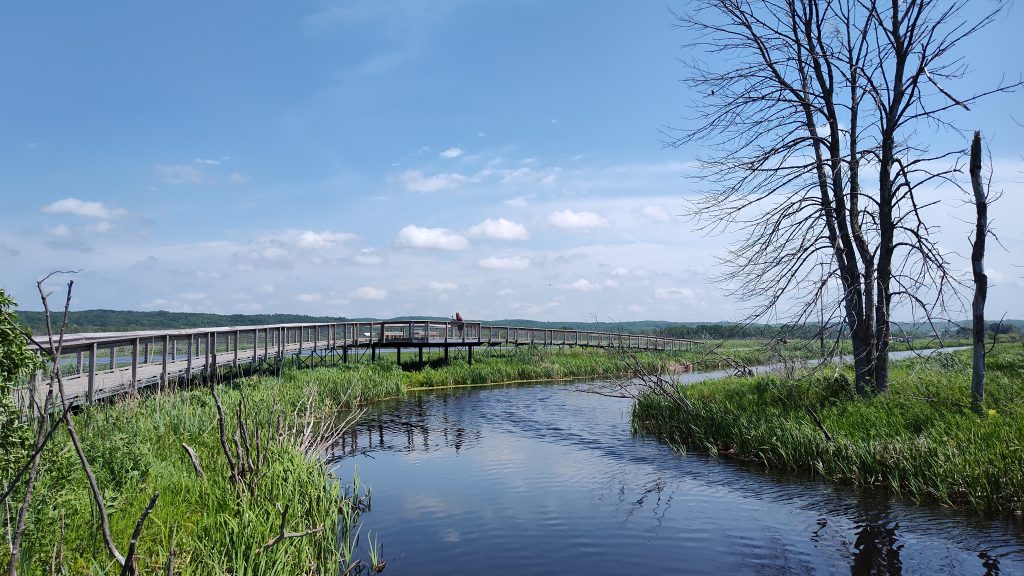
It is located at 16791 Northwood Hwy, Arcadia, MI 49613.
Birds chattered, welcoming us, as we climbed out of our vehicle. Clouds reflected in the rippled water of the Arcadia Marsh. An extended wooden walkway invited us. It the longest boardwalk I’d ever seen, stretching over the 305 acres of wetlands!
We encourage you to experience this treasured habitat, which had nearly been erased by development and invasive species. Now it’s thriving, thanks to Brad and Jan Hopwood. Stay tuned for their amazing story. But first, how are marshes helpful?
How Does This Marsh Helps Lake Michigan?
Coastal marshes are vital to the health of the Great Lakes. First, marshes naturally filter impurities in the water. Arcadia’s purified water flows downhill into Lake Michigan. Second, these wetland plants hold the soil in place, which prevents erosion. Another important factor is the thriving habitat marshes provide for a variety of animal and plant species.
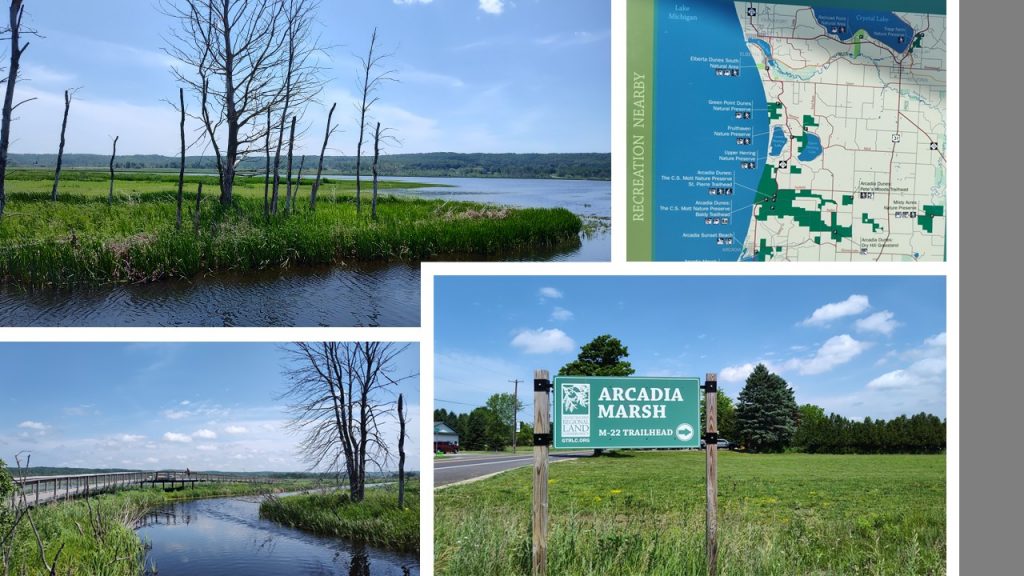
Sadly, it is estimated that nearly 80% of the coastal marshes have been destroyed by humans. Currently, Great Lakes’ wetlands consist of 500,000 acres, which continue working hard to maintain the Great Lakes’ ecosystem. Where are these wetlands located?
Great Lakes Wetlands
The Great Lakes hold 21% of the world’s fresh water. Protecting this resource is essential! There are three main types of Great Lakes wetlands: barrier, lacustrine and riverine.
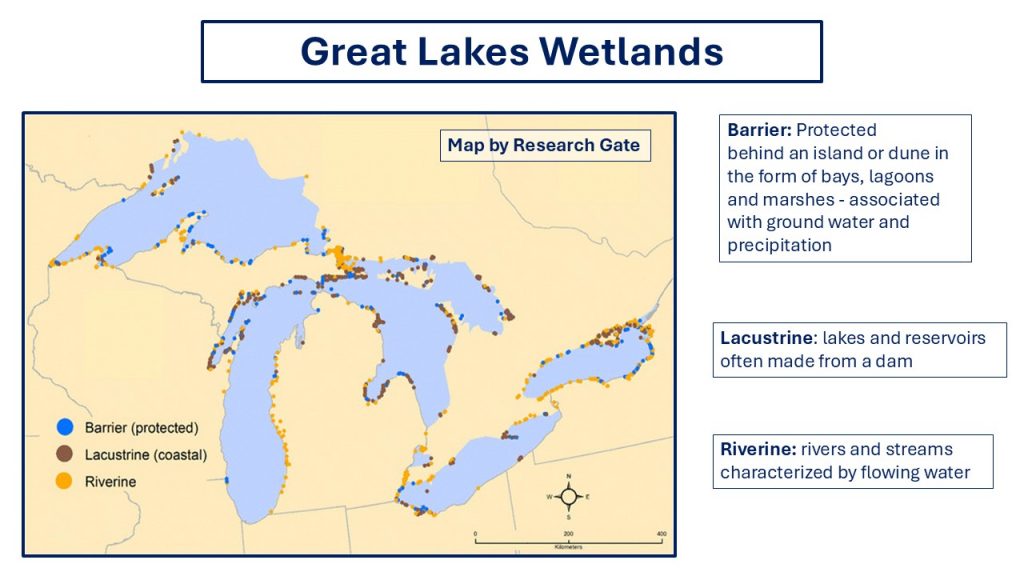
Arcadia Marsh is a riverine, a river mouth wetland. Today, Bowens Creek winds through the land. But it wasn’t always that way.
Bowens Creek Restoration
When Brad and Jan Hopwood purchased this land, a linear ditch had been dug replacing the meandering Bowens Creek. The belief, at that time, was that a straight ditch would have been more efficient. However, the ditch had raised the temperature of the water, ruining the aquatic habitat, so a full restoration of the Bowens Creek was in order.
By recreating the winding waterway, back to the story it had once been, the creek added 3,700 feet of water dwellings. The water temperature lowered ten degrees, improving the habitat for cold-water fish.
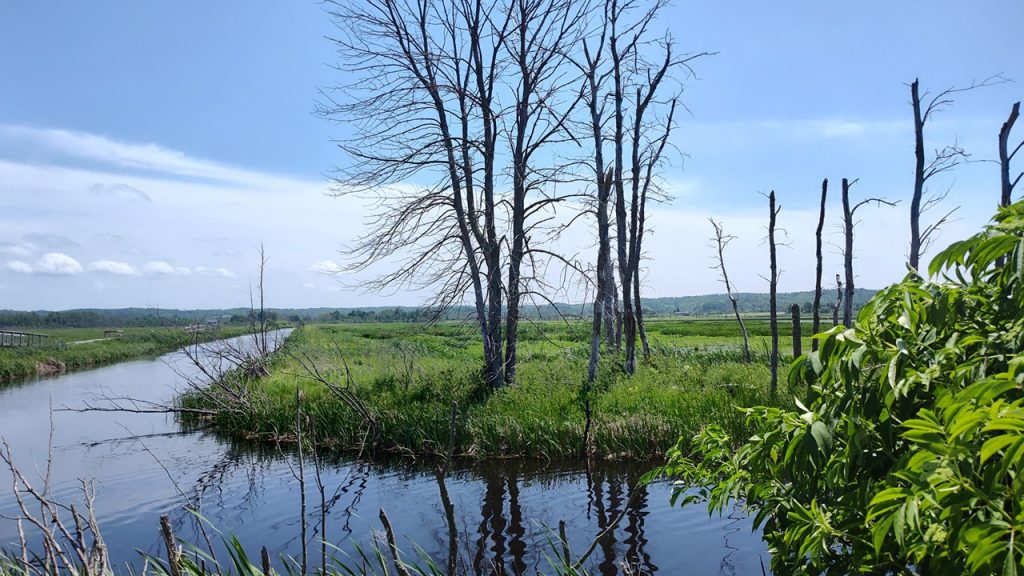
In addition, underwater wooden structures have been added throughout the creek. These provide additional habitat space for certain fish and other water species. Thanks to these efforts, the trout population now thrives and has grown significantly: brown trout, rainbow trout and, our state fish, brook trout.
Bowens Creek flows into Lake Arcadia. Fishing is permitted following the Department of Natural Resources regulations. Lake Arcadia flows into Lake Michigan.
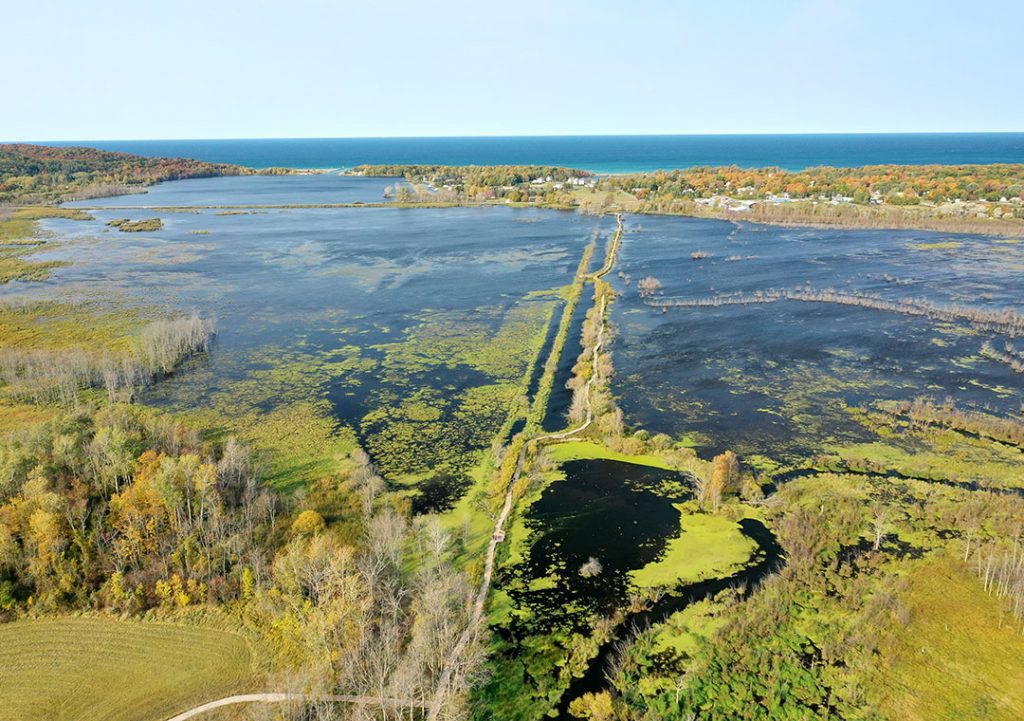
Photo Credit: Mike Naddeo
How did all this restoration begin? Brad and Jan Hopwood are the reason scores of animals and plants have a home, Lake Michigan’s ecosystem has improved and we can visit Arcadia Marsh Nature Preserve.
Brad and Jan Hopwood – Heroes
In the mid 1990’s this land was being prepared to become a private hunting preserve. Invasive species had been flourishing through the area. Brad and Jan Hopwood, Manistee County residents, knew the value of this marsh and the vast variety of species depending on this habitat.
Brad and Jan actually took out a second mortgage purchasing 130 acres. The couple convinced their friends to do the same. Scott and Lisa Smith bought an additional 30 acres, hoping to preserve the wetland.
Brad was quoted as saying, “At the time, we didn’t really know how it was going to work, but we knew what we needed to accomplish.” Brad continued, “I always just thought that, at the minimum, I could break even if I needed to.”
Brad reached out to the Grand Traverse Regional Land Conservancy.
The Grand Traverse Regional Land Conservancy
In 2007 and 2008 The Grand Traverse Regional Land Conservancy agreed to buy parcels of land from the Hopwoods and Smiths. This was the beginning of the Arcadia Marsh Nature Preserve.
“Coastal marshes are tremendously productive ecosystems,” Chris Sullivan, GTRLC land protection specialist, had stated in an article about Arcadia Marsh.
The restoration project included controlled burns to rid the land of invasive species, such as canary grass and phragmites, a tall marsh grass.
The Grand Traverse Regional Land Conservancy partnered with several other conservation groups to meet the $450,000 cost: Little River Band of Ottawa and Chippewa Indians, Ducks Unlimited, Manistee County Road Commission, the Conservation Resource Alliance, United States Fish & Wildlife Service’s North American Wetlands Conservation Act, the Great Lakes Fishery Trust, the National Fish and Wildlife Foundation’s Sustain Our Great Lakes program, the C.S. Mott Foundation, The Grand Traverse Community Foundation, the Steelcase Foundation, Coastal Zone Management Program, The Community Foundation for Muskegon County, the Chicago Community Foundation as well as private fundraising by Grand Traverse Regional Land Conservancy.
Basically, Arcadia Marsh was, and still is, a big deal. These wetlands provide a valuable habitat for an astounding amount of species.
Species Statistics at the Arcadia Marsh
There are 38 endangered, threatened or “special concern” species residing in Arcadia Marsh Nature Preserve. Overall, there are 28 species of fish, over 250 bird species and 208 different kinds of plants, including manoomin, a southern wild rice plant, that grows in this region. Insects thrive in the wetlands, too!
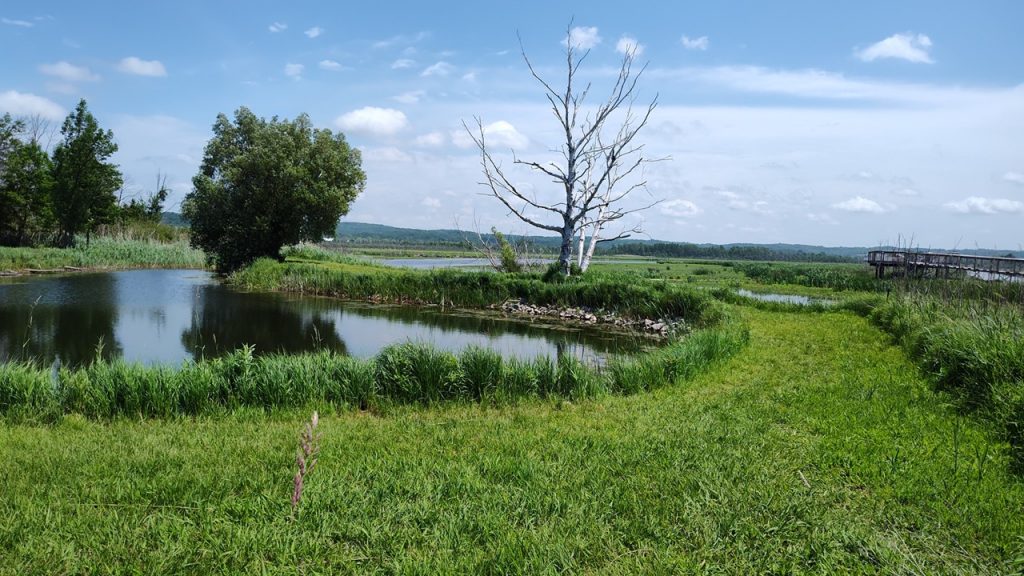
Arcadia Marsh Access
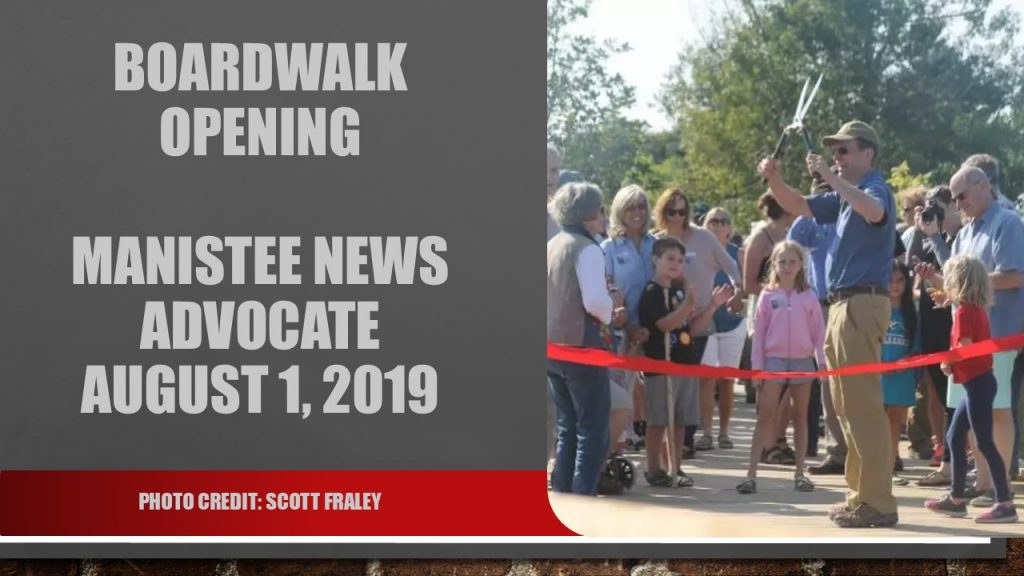
“Access to nature is so important,” Sam Passmore, Director of C.S. Mott’s Environmental Program, stated in a 2022 article. “Directly experiencing the natural world is key to building an environmental ethic in people, young and old. The fact that this boardwalk gives all people the chance to immerse themselves in a landscape of such beauty and importance makes this project doubly attractive.”
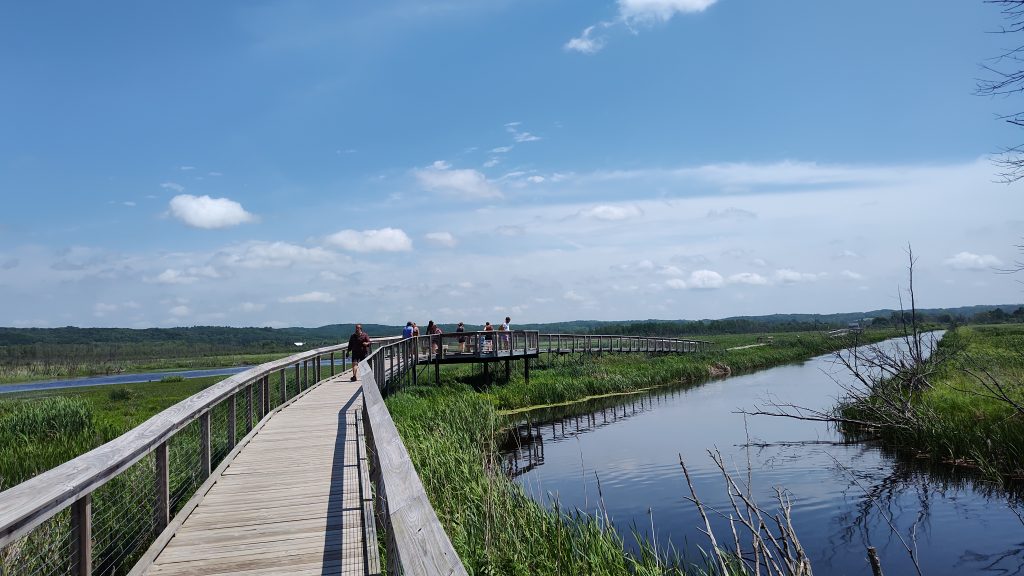
This three-quarter mile boardwalk opened in 2019.
“I’m not aware of any other place in Michigan where you can have this kind of immersive experience in a coastal marsh,” said Brad Hopwood, who chairs the township’s planning commission. “Our dream was to preserve the marsh and provide limited, appropriate access to the public,” he added. “I never imagined a walkway across the marsh. It’s an incredible feature that gives everyone a chance to experience the marsh, even if they’re in a wheelchair or pushing their kid in a stroller.”
Arcadia Marsh Nature Preserve
The Arcadia Marsh Nature Preserve is open most of the year. Seasonal hunting and fishing are allowed. Due to nesting birds, a section of the boardwalk is closed from April 15 – July 15.
Did you know that on Labor Day weekend, Arcadia hosts their annual, “Minnehaha Brewhaha Festival.” The 5K and 15K race routes follow the boardwalk. What a beautiful place to run!
Coming up on Wednesday, August 20, 2025. It will be the Arcadia Marsh Wildflower Hike starting at 10:00 am.
Let’s Keep Our Great Lakes Thriving
We want to recognize the extensive efforts of Brad and Jan Hopwood, Scott and Lisa Smith, The Grand Traverse Regional Land Conservancy, the C.S. Mott Foundation as well as the large amount of other organizations who’ve stepped up to create Arcadia Marsh Nature Preserve. What insightful teamwork! They have accomplished this incredible task, sustaining these wetlands, which directly impact Lake Michigan. Fantastic job, everyone!
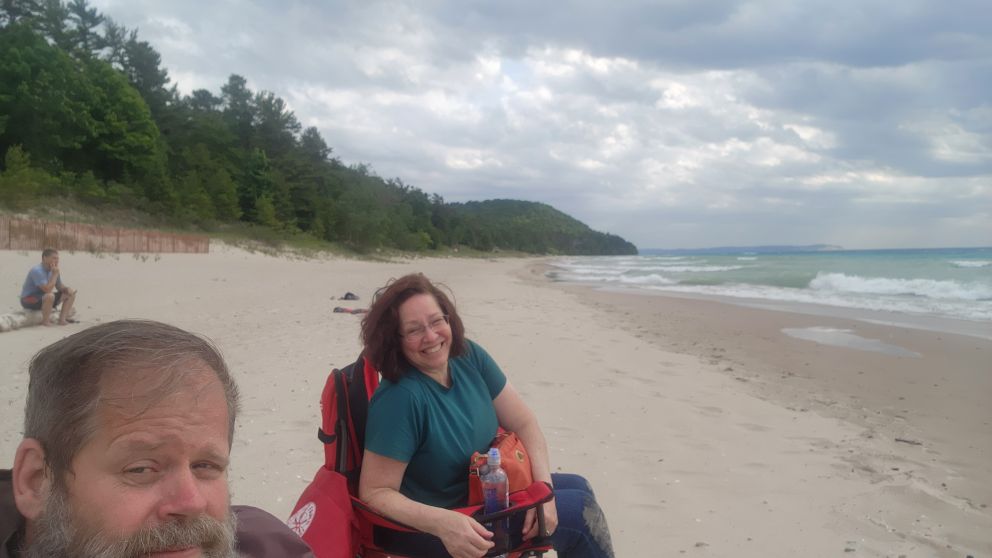
Related Links:
Watch the YouTube video of this M22 journey!
Restless Viking article “Old Facefull” The Oldest Spring in Michigan – M22
Restless Viking article “The Mill” in Glen Arbor – M22
Resources:
Mott Foundation article September 1, 2022
Research Gate Coastal Wetlands map
Grand Traverse Regional Land Conservancy article
MLive “Northern Michigan Boardwalk” article
Manistee News Advocate article August 1, 2019
MLive “Arcadia Marsh is Teeming with Wildlife” article



